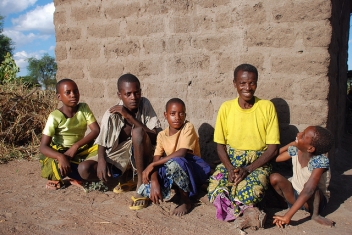The United Nations General Assembly has declared 23 June 2011 as the first ever International Widows’ Day.
“Another International Day” we may sigh. At this stage every day in the year must be at least an international day for one thing, if not a dozen.
But surely if women live longer than men anyway, this means that most married women are likely to eventually become widows? Isn’t this just a natural law yet to be figured out by scientists?
Being widowed is just the start
 On closer inspection, of course, the label “widow” can mean many, many things around the world. And yet there’s a common strand.
On closer inspection, of course, the label “widow” can mean many, many things around the world. And yet there’s a common strand.
For many women, the loss of a husband is only the first traumatic step in a long-term ordeal that will see them lose status, income security, livelihood, a home, personal safety and security. Once widowed, women in many countries are often denied inheritance and land rights.
I interviewed older women in Tanzania in April this year. When their husband dies, women are not entitled to own property though they can live on it and eke a living from it for the rest of their lives. If their family allows it. Often they do. And often they don’t.
In many cases they are evicted from their homes and physically abused – some even killed – by members of their community or their own family. Older widows are associated with witchcraft, and are a soft target for landgrabbers.
Mbuke, a widow in her 60s suspects she was attacked and accused of witchcraft because she was an easy target. “I think it’s because I am living alone,” she explained.
Widowhood impoverishes women who already have very little
Poverty is often made worse by little or no access to credit or other economic resources. In fact, a recent report by HelpAge showed that older women were much less likely than men to have access to credit.
Widowhood, gender and age are all closely intertwined to create a triple vulnerability. While investigating informal lending between neighbours, the report’s author found that in India, Tanzania and Bangladesh older women were consistently unable to access the same loan amounts as men. Older women reported that loans taken from neighbours by men were up to 10 times higher than those taken by women.
“If you are old, you are not invited into women’s groups,” Sahila, a 70-year-old widow from Bangladesh told us. She also mentioned that a world-famous micro-lending institution, “doesn’t like old women”.
She added: “In 1998, I took out a loan for 18,000 taka (US$265) and repaid promptly, but when I returned to borrow more, the bank people said to me, ‘You cannot take any more loans because your hair has turned white'”.
Even the impact of AIDS is felt greatly among widows.
Evidence from Tanzania found that in “skipped generation” households (as they’re called, because the middle generation is missing) – 88% of carers were widows. And in Ethiopia, two-thirds of all women caring for grandchildren in either skipped generation households or in three-generational households were widows.
In both Tanzania and Ethiopia, the average number of children under the care of widows was one to two grandchildren more than that of their male widowed counterparts.
Widows and conflict
In Cambodia, because so many men were killed during the Khmer Rouge regime of the 1970s, older women in Cambodia outnumber older men. There are twice as many women over 60 as men, and two-thirds of these are widows.
Of course, not all widows are older women. Vast numbers of women are widowed due to armed conflict and many of these will be young women. In some parts of eastern Democratic Republic of the Congo, for instance, it is reported that around 50% of women are widows, while there are an estimated three million widows in Iraq and over 70,000 in Kabul, Afghanistan.
As always, lack of hard data is one of the major obstacles to improving the lives of the world’s widows. There is a need for more research and statistics disaggregated by marital status, sex and age. This would help reveal the incidence of widow abuse and illustrate the situation of widows.
A better widowhood?
No one expects widowhood to be the happiest period of a woman’s life. But should it really be this miserable for so many millions of women?
What can be done? Our governments should take action to uphold their commitments to ensure the rights of widows as enshrined in international law, including the Convention on the Elimination of All Forms of Discrimination Against Women. Even when national laws exist to protect the rights of widows, weaknesses in the judicial systems means widows’ rights are not always adequately defended or implemented. This has to change.
International and local NGOs, and international donors can highlight and focus their existing projects that work with widows so that these programmes can be replicated.
If you know of some, please share with us on this blog.
So maybe an International Widows’ Day could be a very small opportunity for action for widows; too long hidden, uncounted and ignored.
So, still unconvinced we don’t need another International Day Of….
Read more about our work protecting older women’s rights in Tanzania
